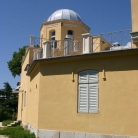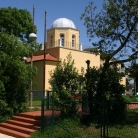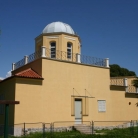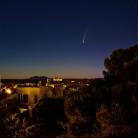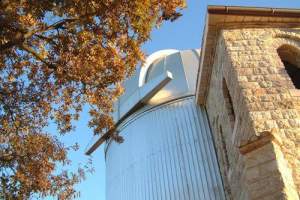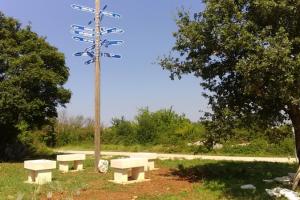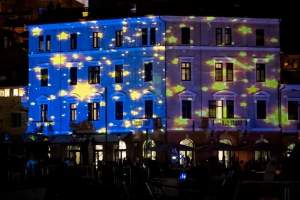Pula Observatory
Almost 160 years ago, Pula-Pola became the main war port of Austria and the Navy Observatory was established soon enough in 1869. It was a part of the Royal Hydrographical Institute (K. und K. Hidrographisches Amt). The building comprising of the observatory, repository of the nautical and physical instrument, repository of nautical maps and the navy library was built in 1871 at Monte Zaro, one of the hills in Pula.
The Navy Observatory included four significant services e.g. Current Time Service, Chronometer Service, Meteorological Service and Geomagnetic Service. The difficult wartime circumstances in 1848 were critical for closing the observatories in Venice and Trieste, and the part of the inventory and the instruments was later on transferred to Pula.
At the end of the 19th century, observing and studying of celestial bodies and astronomical occurrences met rapid development due to the advanced technology of lens grinding, producing special optical glasses and improvement of astronomic instruments. The modern equipment, new methods of work and observation and the significant effort of the Austrian astronomer Johann Palisa between 1871 and 1880 gave the observatory the leading role.
The Navy Observatory in Pula became an acknowledged world observatory. Due to its work in astronomy, 28 new planetoids were discovered in Pula, and one of them bears the name Istria. Today fully refurbished, the observatory in Pula-Pola is the oldest astronomic institution in Croatia, still gazing at the indefinite sky, looking for new discoveries.
Visits:
02.04. - 31.08.2024: Tuesday, Friday: 19:30 - 21:00
Visits to the observatory can be realized throughout the year by prior appointment
Pula Observatory
Park Monte zaro
Contact:
Astronomsko društvo Istra
+385 91 214 1966, astroistra.pu@pu.t-com.hr
www.adip.hr












